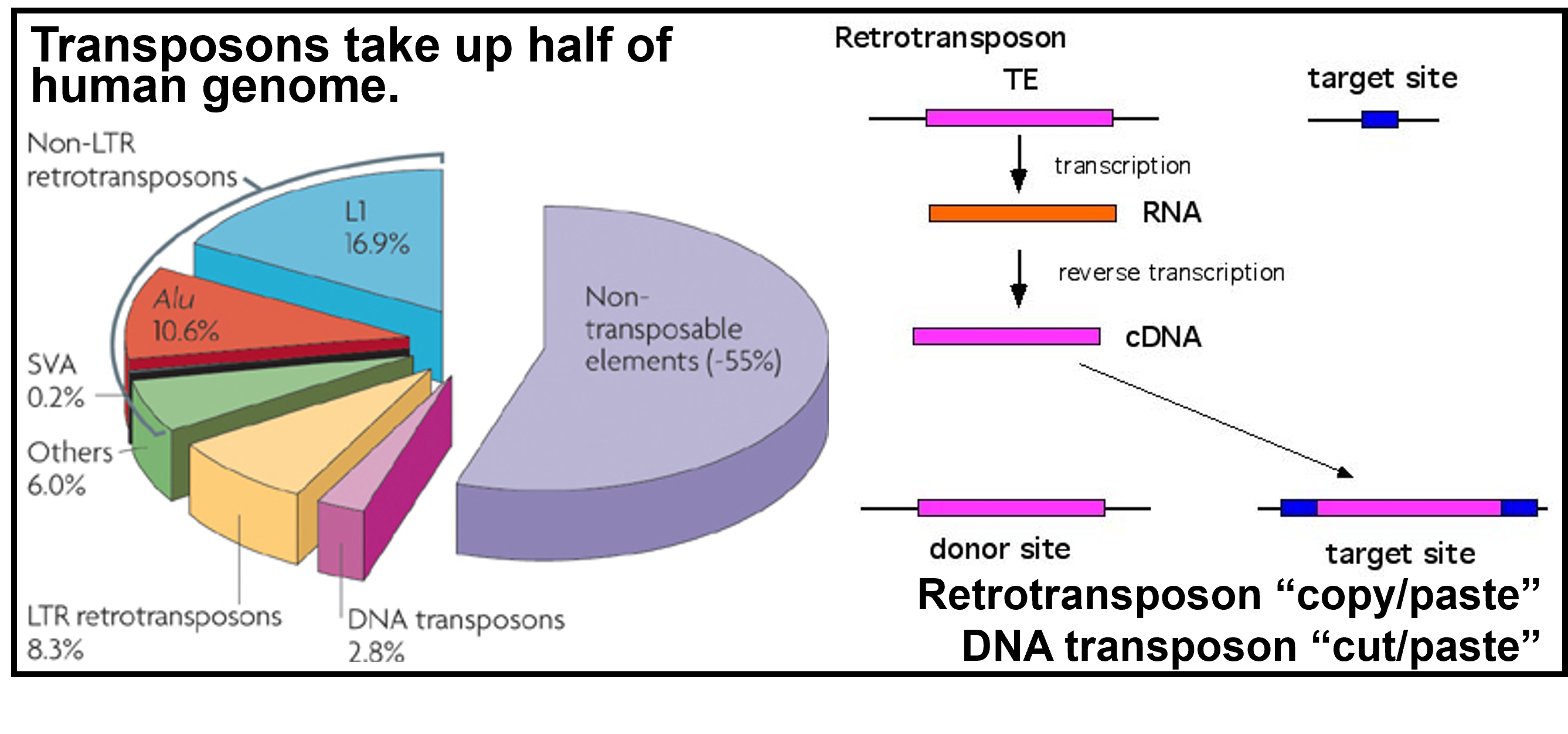Transposons are segments of DNA that can “jump” or “transpose” themselves to another position in the genome.
They move by either insert copies themselves to a new location - the “copy/paste” mechanism for retrotransposons, or yeet themselves to another location in the genome - the “cut/paste” mechanism for DNA transposons.
As a result of transposons copy pasting themselves allover the place, the human genome is littered with transposon repeats. It’s estimated that nearly half (45%) of the genome is comprised of transposable elements.
The top 2 aggressive retrotranspons are L1 (comprises ~17% of genome) and Alu (~10%).
 Image source: left The impact of retrotransposons on human genome evolution | Nature Reviews Genetics, right Applied Computational Genomics Course by Dr. Aaron Quinlan
Image source: left The impact of retrotransposons on human genome evolution | Nature Reviews Genetics, right Applied Computational Genomics Course by Dr. Aaron Quinlan
Transposable genes
were first discovered by the geneticist Barbara McClintock in maize in the 1950s, a discovery that completely destroyed her career at the time.
- The transposable elements in plants genome are a defense mechanism to the environmental challenges that induces cellular stress, because they can’t run away like animals, they developed fancier genetic tricks - juggling DNA segments (shuffling the deck) in hope of the recombination would generate something useful.
Interspersed: repeating patterns
- Tandem repeats refer to (near) identical repeats occurring in a row (e.g. CAGCAGCAGCAGCAG…). The centromere comprise largely of ~180 base pairs long repeats that occur hundreds of thousands time in a row.
- Interspersed repeats refer to are located in different places in genome, sometimes across different chromosomes. The transposons are interspersed repeats.